Air intake and exhaust vents are used in ventilating steep-slope roof assemblies to provide a means of allowing outside air to enter and exit attics and ventilation spaces in cool climates, the main objective of attic or roofing system air flow is to keep a chilly roof temperature to manage ice dams created by melting snow, as well as to duct moisture that relocates from the conditioned area to the attic. Air consumption as well as Plain tile vent are utilized in aerating steep-slope roof covering settings to offer a means of permitting outside air to go into as well as exit attics and air flow areas. Roof vents intake vents are utilized to permit outside air to participate in attics as well as air flow rooms.
Roof vents are also called attic vents; these vents ensure there is a good amount of airflow and ventilation in your attic. The general purpose of roof vents is to keep cool in the summer and dry during the colder months. Encouraging natural airflow and circulation makes your home more comfortable by providing a way for hot, moist, or stale air to leave the house. Attic ventilation is important in both hot and cold climates.
Unventilated or poorly ventilated attics don’t have an escape route for the heat that builds up. This buildup of heat can damage your shingles from the inside out. An evenly vented roof will allow the hot air to escape keeping your roof and attic cooler. Continuous ridge vents are more effective because they are installed at the peak of a roof’s ridge, allowing for trapped warm air to escape from the attic. It also works better because it allows external moving creating a vacuum when the wind blows over the top of the roof. This helps create the right air balance in your attic, which plays an important role in keeping your home comfortable.
The method behind roof ventilation
The roof design should provide plenty of air space for insulation and air flow under the roof and eaves. And, a correctly designed system will precisely balance the intake and exhaust ventilation under the roof so that the attic is slightly pressurized, preventing conditioned air from being sucked out too quickly through the vents, thus increasing heating and cooling costs.
Ventilation only works when air flows. There are two primary methods to create air flow within an attic:
- Mechanical. Requires a power source.
- Natural. Whenever possible, natural roof ventilation is used. The stack effect and the wind effect work together to naturally circulate air.
The stack effect occurs when hot air rises and creates a higher pressure at high points in the attic. Hot air that escapes is known as exhaust. However, this hot air cannot escape without an inlet for cooler, low-pressure air. Cool air that enters is referred to as intake. When the wind blows against the outside of a roof and increases the volume of intake and exhaust, it is known as the wind effect. Intake and exhaust generate the natural flow of air to create a well-vented attic.
Benefits of roof ventilation
Ventilation benefits a roof when it’s hot outside as well. When the temperature outside rises, the temperature on your roof can be nearly double. A hot roof over a poorly vented attic translates into a very hot attic.
Unventilated or poorly ventilated attics don’t have an escape route for the heat that builds up. This buildup of heat can damage your shingles from the inside out. An evenly vented roof will allow the hot air to escape keeping your roof and attic cooler.
When the temperature increases outside, we all want to stay cool inside. A properly vented roof allows heat to escape, thereby reducing the workload on your air conditioner. This one is simple: an air conditioner that’s running less means a lower electric bill.
These indoor temperature extremes are often the result of poorly vented roofs. Once your roof is adequately vented to allow the hot air to escape and the cool air to enter the attic space, your home will be more comfortable year-round.
A well-designed and properly installed attic ventilation system, accompanied by good attic insulation, will provide excellent temperature and moisture control to protect your home from unnecessary damage and help maintain comfortable internal temperatures year-round.
A roof ventilation system works by providing a continual flow of air through the attic space, helping remove overheated air and moisture from the attic and roof system and reduce the impact of changing temperatures and moisture conditions both inside and outside the home.
The system that allows the ventilation of air to take place consists of intake vents and exhaust vents installed at strategic intervals in the attic or roof area. Several different types of vents may be used in different locations to provide for attic air to circulate in the right amounts and directions throughout the roofing system.
Different types of roof vents
Air intake and exhaust vents are used in ventilating steep-slope roof assemblies to provide a means of allowing outside air to enter and exit attics and ventilation spaces.
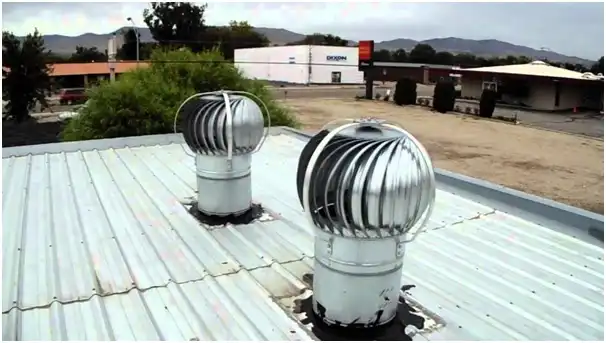
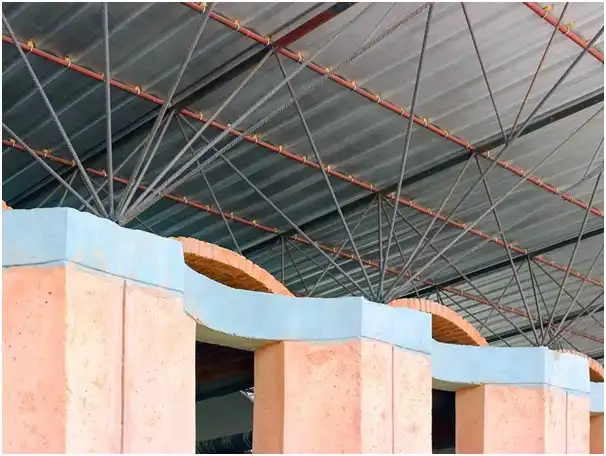
system in Gando village, Burkina Faso
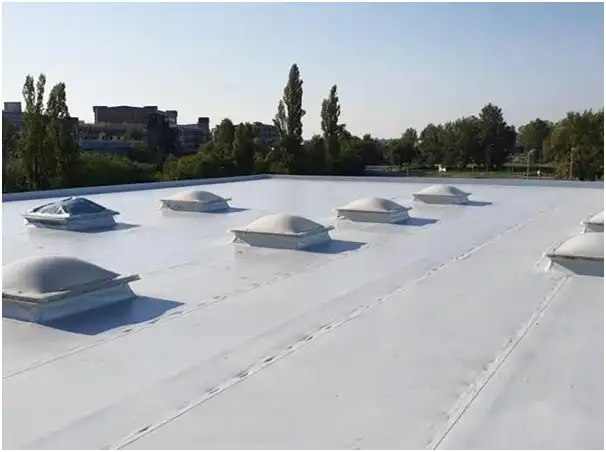
Vukovar, Croatia

double domes and windcatchers
(openings near the top of the
towers) in the central desert city of
Naeen, Iran. Windcatchers are a
form of natural ventilation.
Exhaust Vents
Exhaust vents allow exhaust to escape, some of the popular types are given below.
Wind Turbines/Whirlybird Ventilation
Wind turbines are also commonly called whirlybirds. These are one of the oldest types of roof vents available. You might recognize the wind turbine from older homes or even your childhood homes. Maybe your home now has one.
The wind turbine roof vent uses no electricity. It processes on air movement alone, as the name suggests. Wind powers this puppy to circulate and vent air. As the wind turbine spins, the vanes pull hot and humid air out. This process removes the stale air from your attic or roof space, freshening up the space and potentially cooling as well by natural means.
Power Vents
These types of roof vents operate on electric power. They are often referred to as electric-powered attic vents. These powered vents can be mounted on your roof or your gable. You can choose from several different colors to get one that blends with your other colors. Additionally, the roof power vents are primarily low-profile. They are small and round and set close to your roof. There are 2 main types of powered vents – hardwired models and solar-powered models.
Hardwired Power Roof Vents
The most common Power roof vent is a hardwired power roof vent. If you decide to use a roof vent that is not solar-powered, this is what you will be using. This type of roof vent is directly wired into your home and typically attached to a thermostat/humidistat to operate the vent. However, they might also be operated by a manual switch instead. The hardwired roof vent can be attached to either a hole cut into your roof or they can be mounted to a gable. As with various other vent types, it is ideal to pair your hardwired vent with an intake vent, such as a soffit vent.
Solar-Powered Roof Vents
Solar-powered roof vents are slightly different from hardwired roof vents because they are powered by solar power. These roof vents have a solar panel attached to the mount, and they are ultimately powered by the sun’s rays charging the panel. These are ideal if your roof gets a lot of natural light. If your roof is shaded during the day, then this is probably not an ideal solution for you. The solar panel powers the fan and moves masses of air out to help cool the attic or roof space. These do not typically move as much air as hardwired models.
Off- ridge vents
Off-ridge vents are a lesser-known vent. They are not as popular as other types of vents and in fact, can be hard to find information on. They operate similarly to box vents, which we discuss next. Off-ridge vents require a cutout in the roof.
They are then mounted in the cutout, which is typically located near the ridge. These are long and thin in shape. These vents remove moisture and hot air from your attic or roof space.
Box Vents
Box vents are another popular and well-known vent option. You most likely have seen that small box sitting on a rooftop. You may even see a rooftop with several sitting atop it. When it comes down to it, the most commonly recommended vents are either ridge vents or box vents.
Box vents are often combined with soffit ventilation techniques for optimal performance. These types of roof vents do not use electricity. They work best with open attic plans. The way the vent works is the winds flow through and combined with the soffit, the vent pulls moisture and hot air out of the attic.
Ridge Vents
Ridge vents are the newest and greatest venting innovation. It seems like these have quickly become one of the more popular venting options. If you are getting a new roof, your roofing company may push for this type of vent system.
Ridge vents are designed to be installed at the peak of a roof slope. They are almost not visible to the naked eye, which perhaps contributes to its popularity. Ridge vents are slightly more expensive than other vent options.
These vents are designed to provide an even distribution of air, rather than just venting specific spots or areas. This feature helps to make this one of the most efficient roof venting options now available.

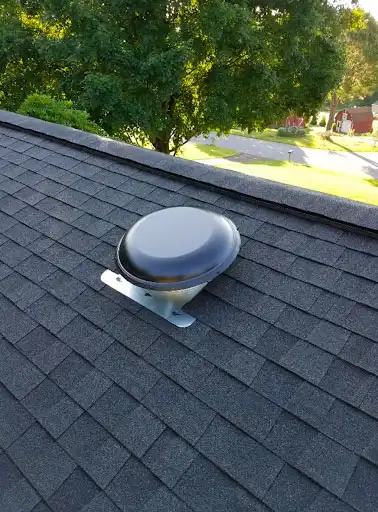

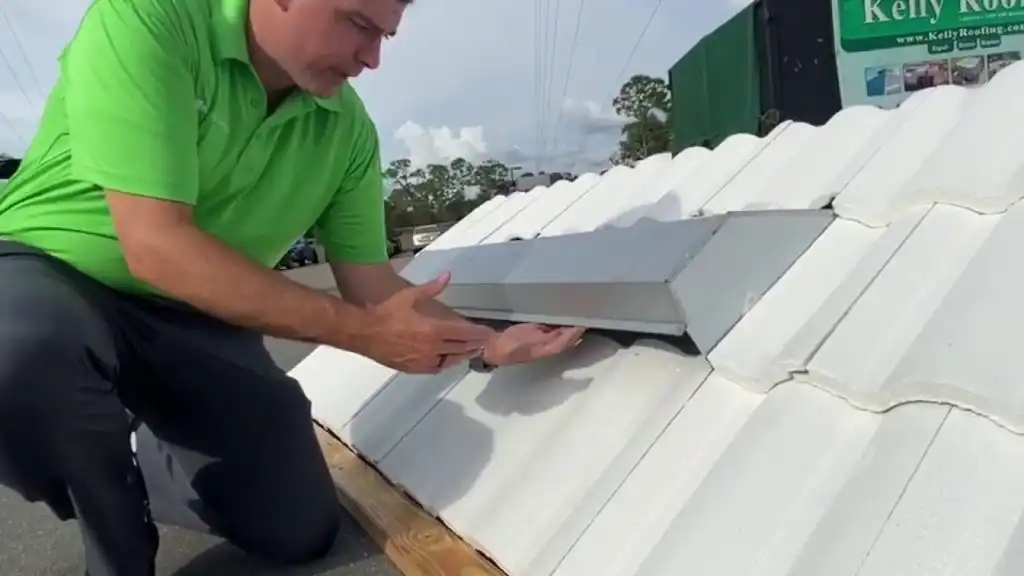

Cupola Vents
The cupola vent is also a great way to just give your roof a little something extra. These vents are very large but also very nice. The cupola vent is more common on sheds, barns, and outbuildings than on most houses. However, it is an effective vent that is still in use today.
The cupola vent’s original purpose was to allow ventilation and light through one source into an attic or roof space area. These types of roof vents sit directly on the ridge of a roof and air continually passes through them.
Hip Vents
The hip vent is designed similarly to a ridge vent. The thought process behind a hip vent is for what is known as a hip roof. This type of roof is typically shaped much like a pyramid. The roofs are steep and heavily sloped and don’t have ridges to use a ridge vent with.
In addition, the vent is inconspicuous and low-profile so you don’t have to worry about having 10 box vents slatted into your roof for your space. Much like ridge vents, hip vents should be combined with soffit ventilation in order to be most effective.
Intake Vents
Intake vents typically work best with another form of ventilation. This pulls the air in and cycles it through another system to effectively cool the space.
Soffit Vents
Soffit vents are a unique vent with their own style. These types of vents are typically not installed directly on the roof but rather into the underneath of an eave. They might also be under a peak.
Soffit is a flexible material that inserts and simply allows ventilation. This way, warm and humid air can travel out of the space before it causes problems. The soffit vent works well on its own but is often paired with another type of vent like many of the aforementioned types.
Drip-Edge Vents
The drip-edge vent is designed to work much like the soffit vent does. Not every home is designed to have room for a soffit vent under the eaves. That is where drip-edge vents come into play.
These types of roof vents are designed to attach to the drip-edge of your roof and provide intake ventilation. The vent is a netted design to allow airflow.
Installing drip-edge vents can take quite a bit of work depending on how much setup you already have. However, they are ideal for small spaces that have a drip-edge and no extra room. These vents are quite effective.
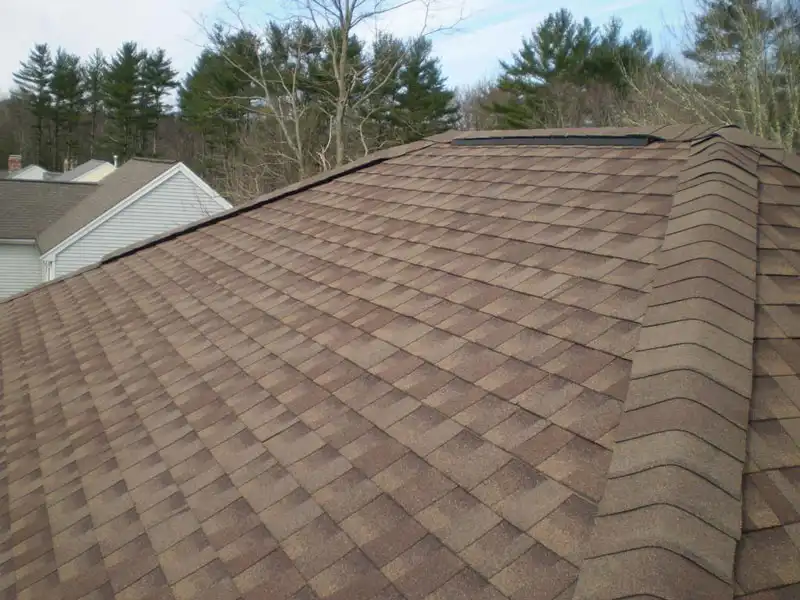
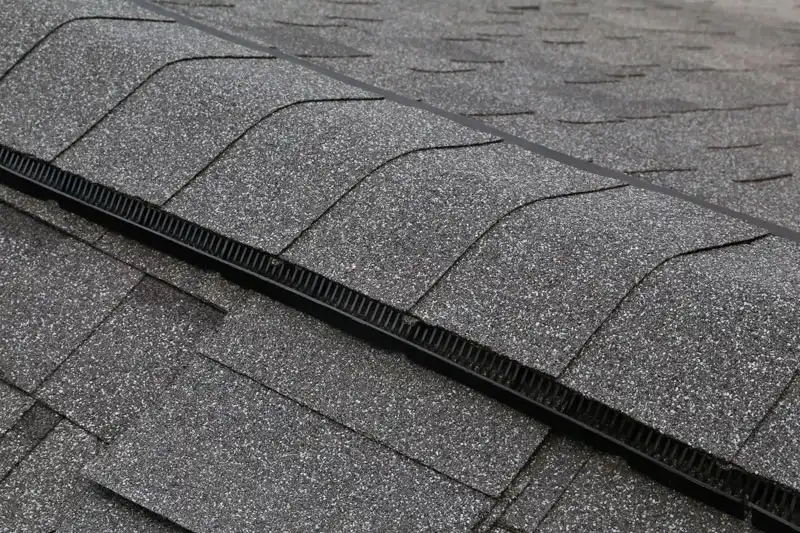
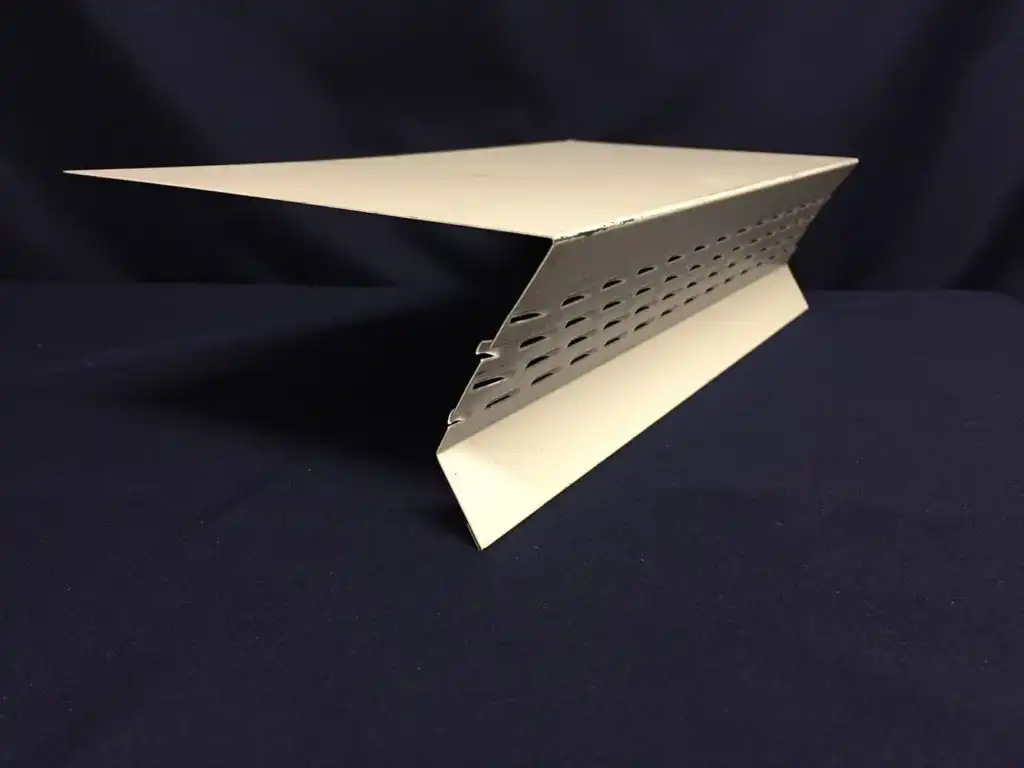

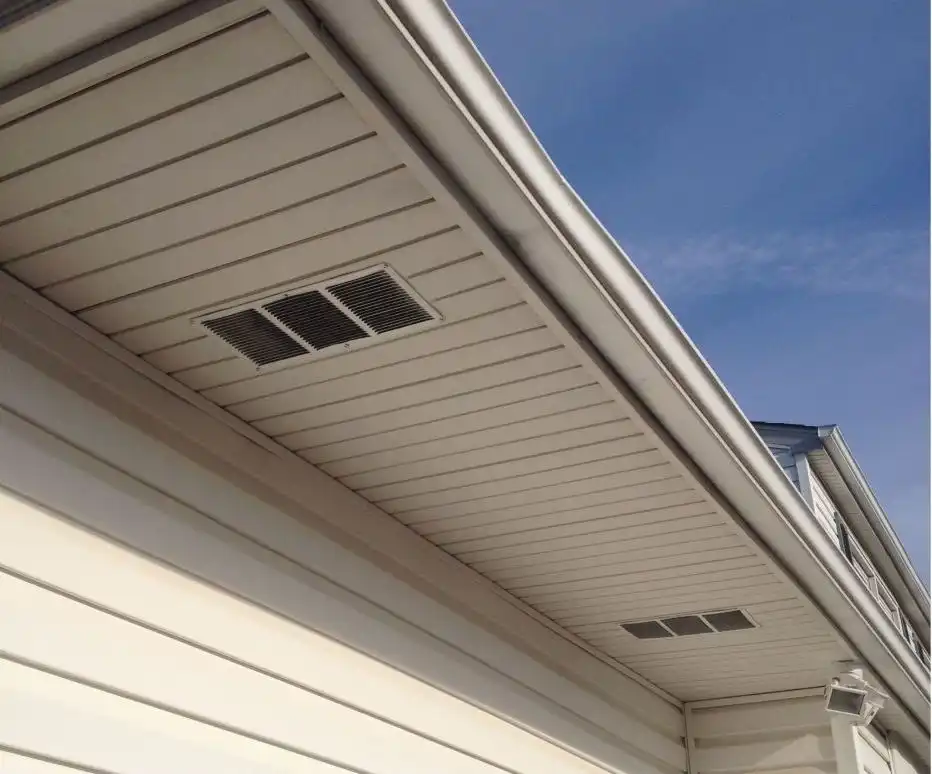
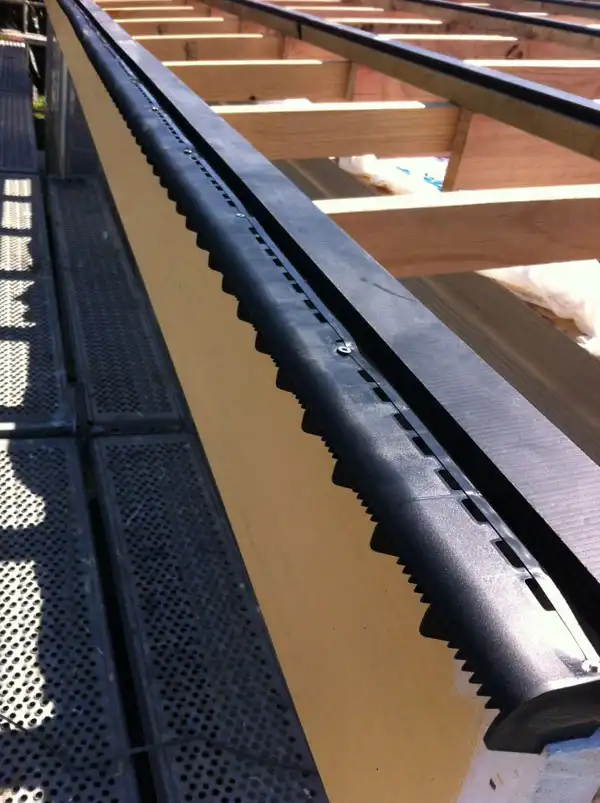
Over Fascia Vents
The fascia vent is a great option for those hip roofs. Why? Because the hip roof is shaped like a pyramid. It doesn’t have much of an edge and it really doesn’t have eaves to attach either drip-edge or soffit venting.
Fascia vents become an ideal solution for this scenario. These types of vents pair quite nicely with hip vents to give you the best ventilation setup for a roof such as this.
Apart from the setup, the concept is much the same as the drip-edge or soffit vent systems. We highly recommend using the hip vent paired with the fascia vent for hip-style roofs. Houses with this type of roof often have very large attic or roof spaces and keeping the heat under control could significantly reduce cooling costs.
Conclusion
Your roof ventilation system should be inspected along with your roof at least a couple of times. Look for anything that may be blocking the vent, such as leaves and other debris. It’s a good idea to inspect the inside of the attic or roof deck for damage from moisture. And, be sure to inspect your attic insulation to see that it is in good condition and properly placed so your home is well-insulated against outdoor temperature changes.
Source –
quora.com, prestigeroofinglv.com, essentialhomeandgarden.com, hillroofingcorporation.com, ongroofing.com, everybodyneedsaroof.com, wawhirlybirds.com.au, roofingmagazine.com, houspect.com.au, youtube.com, carlsonexteriors.com, thespruce.com, banddbuilders.com, merchantcircle.com, constructionmentor.net, davessheetmetalinc.com, adexsi.com, wiki, lafargeholcim-foundation.org

